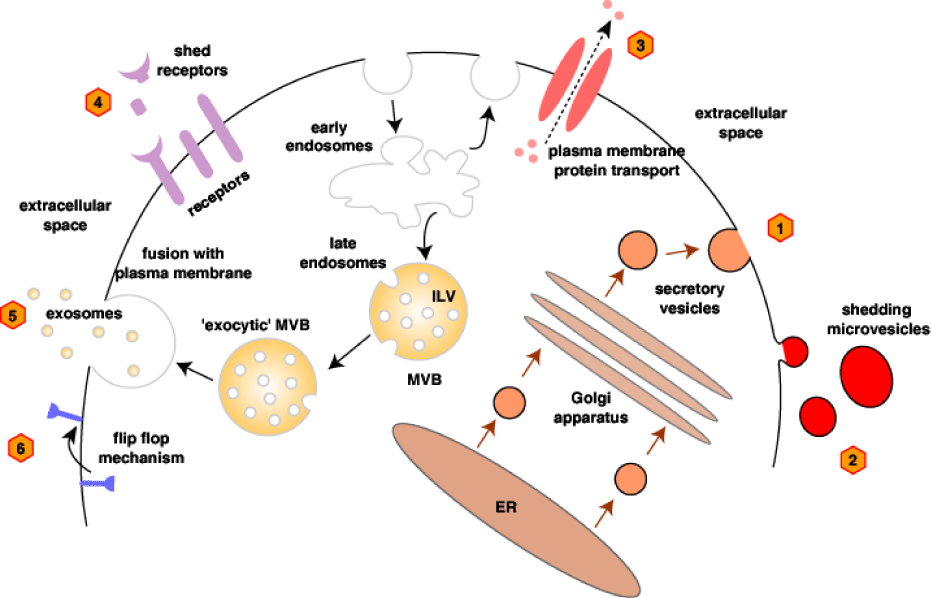
 |
| Figure 1: Classical and non-classical protein secretion pathways. Classical and non-classical modes of protein secretion are depicted. In the ER/Golgi dependent classical secretory pathway (denoted as 1), proteins are synthesized with signal peptides which target them to lumen of the ER. Secretory vesicles containing the protein bud off from the Golgi apparatus and fuse with the PM to release the contents through the process of exocytosis. Proteins released by the non-classical secretory pathways are devoid of signal peptides and are ER/Golgi independent. SMVs are large membranous vesicles (50-1000 nm diameter) that are shed directly from the PM of a wide variety of cell types (denoted as 2). Proteins such as fibroblast growth factors-1 and -2 are capable of translocating from the cytoplasm directly through the PM into the extracellular space in an unconventional manner [31-33] (denoted as 3). Proteolysis on the exosomes, SMVs and cell surface, releases ectodomains of membrane proteins into the extracellular microenvironment (denoted as 4). Exosomes, 40-100 diameter membranous nanovesicles, are released into the microenvironment upon fusion of the MVBs with the PM (denoted as 5). Flip flop mechanism mediates secretion of proteins (e.g., HASPB) anchored to membrane through dual acylation in the N-terminus [34,35] (denoted as 6). |